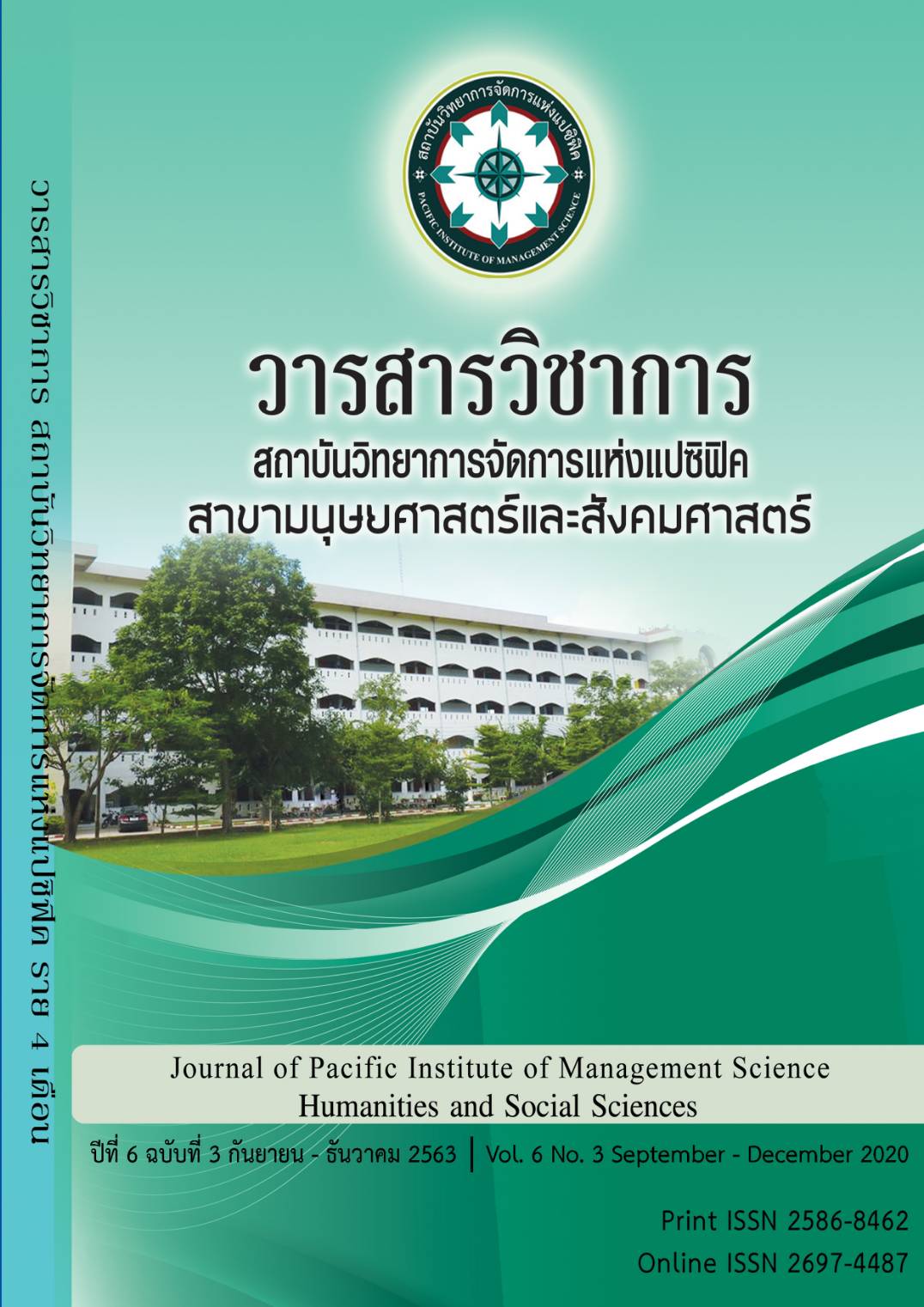Factors in the treatment of drug addicts in Nakhon Sawan Province.
Keywords:
Communication Process, Rehabilitation, Drug AddictedAbstract
The purpose of this research was to study the demographic characteristics of drug addicts who received treatment at the center of Nakhon Sawan province, to study internal and external factors of drug addicts to receive drug treatment and study the communication process in Kwan Pandin center Nakhon Sawan Province. This research used a mixed research method. A quantitative research employed a survey method. The 132 sample group was those who received treatment at the Kwan Pandin Cente Nakhon Sawan Province. A qualitative research employed non-participant observation methods. The key informants were 5 lecturers and 5 persons receiving treatment at Kwan Pandin Center, Nakhon Sawan Province. The research found that internal factor of the drug addicts being treated are those who want to have a better life. The average value is 4.90. External factors of drug addicts being treated are those who are addicted to drug treatment according to the expectations of close individuals. The average is 4.48. Communication process within the Kwan Pandin center Nakhon Sawan Province consists of 4 issues as follows: (1) The sender is a lecturer from government agencies in Nakhon Sawan province. There is a motivating way with friendly speech methods. (2) Information consists of 2 parts: activities that allow the therapist to do while staying within the earth center and the communicate content. (3) Communication channels within the Kwan Pandin Center included electronic media, print media, music and special media. (4) Recipients of the group who have been treated repeatedly will have more assertiveness than those who first received treatment.
References
เกยูร ชิวหากาญจน์. (2541). การเปิดรับข่าวสาร ความรู้ ทัศนคติเกี่ยวกับการป้องกันยาเสพ ติดของกลุ่มผู้ใช้แรงงานในโรงงาน อุตสาหกรรม ในจังหวัดสมุทรปราการ. วิทยานิพนธ์ปริญญาหมาบัณฑิต จุฬาลงกรณ์มหาวิทยาลัย,กรุงเทพฯ
ดารณี พานทอง พาลุสุข. (2532). ทฤษฎีการจูงใจ. กรุงเทพฯ: มหาวิทยาลัยรามคำแหง.
บุญญฤทธิ์ ชลวิถี. (2555) การสื่อสารภายในบุคลเพื่อการเลิกยาเสพติด. วิทยานิพนธ์ปริญญามหาบัณฑิต. สาขาวิชานิเทศศาสตร์. มหาวิทยาลัยสุโขทัยธรรมาธิราช.
ปิยวรรณ ทัศนาญชลี. (2554). กระบวนการไม่เสพยาบ้าซ้ำ กรณีศึกษาผู้ผ่านการบำบัดฟื้นฟูสมรรถภาพผู้ติดยาเสพติดในระบบบังคับบำบัด. วิทยานิพนธ์ปริญญามหาบัณฑิต มหาวิทยาลัยศรีนครินทรวิโรฒ
วชิรวัชร งามละม่อม. (2558). ทฤษฎีการมีส่วนร่วม. สถาบันวิชาการไทยวิจัยพัฒนาการจัดการ TRDM ปทุมธานี
ศูนย์อำนวยการป้องกันและปราบปรามยาเสพติด. (2561). สืบค้นเมื่อ18ตุลาคม 2561.จาก http://ncmc.moph.go.th/contact
A. H. Maslow. (1943). A Theory of Human Motivation. Retrived October 15, 2018, from http://citeseerx.ist.psu.edu/viewdoc/download?doi=10.1.1.318.2317&rep=rep1&type=pdf
Berlo, D. K. (1960). The Process of Communication: An Introduction to Theory and Practice. New York: Holt Rinehart and Winston.
Klapper, J. T. (1960). The Effects of Mass Communication.New York: Free Press.
Triandis, CharalambosH. (1971). Attitude and attitude change. New York: John Wiley & Sons.
Downloads
Published
Issue
Section
License
บทความที่ได้รับการตีพิมพ์เป็นลิขสิทธิ์ของ สถาบันวิทยาการจัดการแห่งแปซิฟิค
ข้อความที่ปรากฏในบทความแต่ละเรื่องในวารสารวิชาการเล่มนี้เป็นความคิดเห็นส่วนตัวของผู้เขียนแต่ละท่านไม่เกี่ยวข้องกับสถาบันวิทยาการจัดการแห่งแปซิฟิค และคณาจารย์ท่านอื่นๆในสถาบันฯ แต่อย่างใด ความรับผิดชอบองค์ประกอบทั้งหมดของบทความแต่ละเรื่องเป็นของผู้เขียนแต่ละท่าน หากมีความผิดพลาดใดๆ ผู้เขียนแต่ละท่านจะรับผิดชอบบทความของตนเองแต่ผู้เดียว







